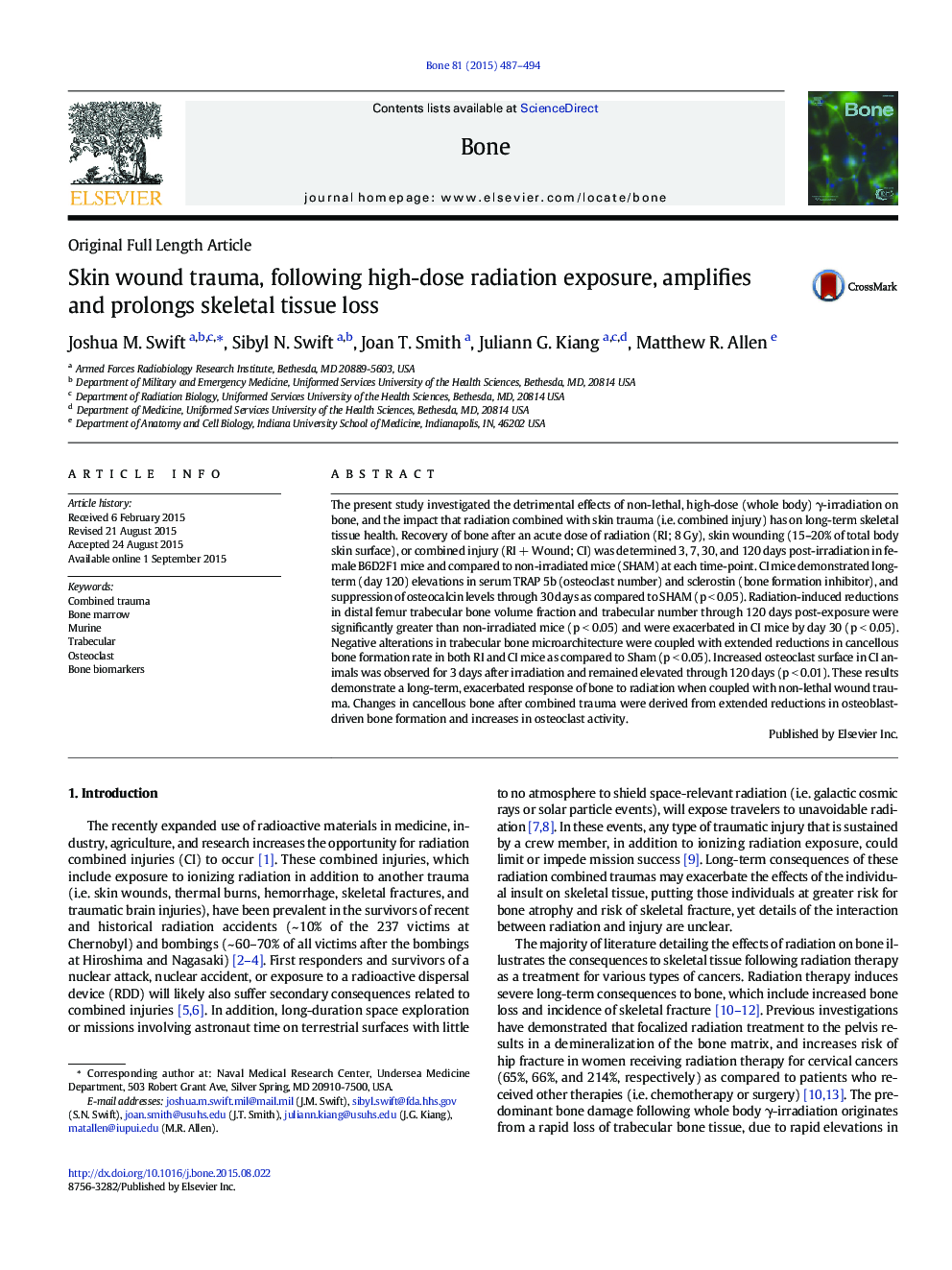| Article ID | Journal | Published Year | Pages | File Type |
|---|---|---|---|---|
| 5889326 | Bone | 2015 | 8 Pages |
Abstract
The present study investigated the detrimental effects of non-lethal, high-dose (whole body) γ-irradiation on bone, and the impact that radiation combined with skin trauma (i.e. combined injury) has on long-term skeletal tissue health. Recovery of bone after an acute dose of radiation (RI; 8 Gy), skin wounding (15-20% of total body skin surface), or combined injury (RI + Wound; CI) was determined 3, 7, 30, and 120 days post-irradiation in female B6D2F1 mice and compared to non-irradiated mice (SHAM) at each time-point. CI mice demonstrated long-term (day 120) elevations in serum TRAP 5b (osteoclast number) and sclerostin (bone formation inhibitor), and suppression of osteocalcin levels through 30 days as compared to SHAM (p < 0.05). Radiation-induced reductions in distal femur trabecular bone volume fraction and trabecular number through 120 days post-exposure were significantly greater than non-irradiated mice (p < 0.05) and were exacerbated in CI mice by day 30 (p < 0.05). Negative alterations in trabecular bone microarchitecture were coupled with extended reductions in cancellous bone formation rate in both RI and CI mice as compared to Sham (p < 0.05). Increased osteoclast surface in CI animals was observed for 3 days after irradiation and remained elevated through 120 days (p < 0.01). These results demonstrate a long-term, exacerbated response of bone to radiation when coupled with non-lethal wound trauma. Changes in cancellous bone after combined trauma were derived from extended reductions in osteoblast-driven bone formation and increases in osteoclast activity.
Related Topics
Life Sciences
Biochemistry, Genetics and Molecular Biology
Developmental Biology
Authors
Joshua M. Swift, Sibyl N. Swift, Joan T. Smith, Juliann G. Kiang, Matthew R. Allen,
